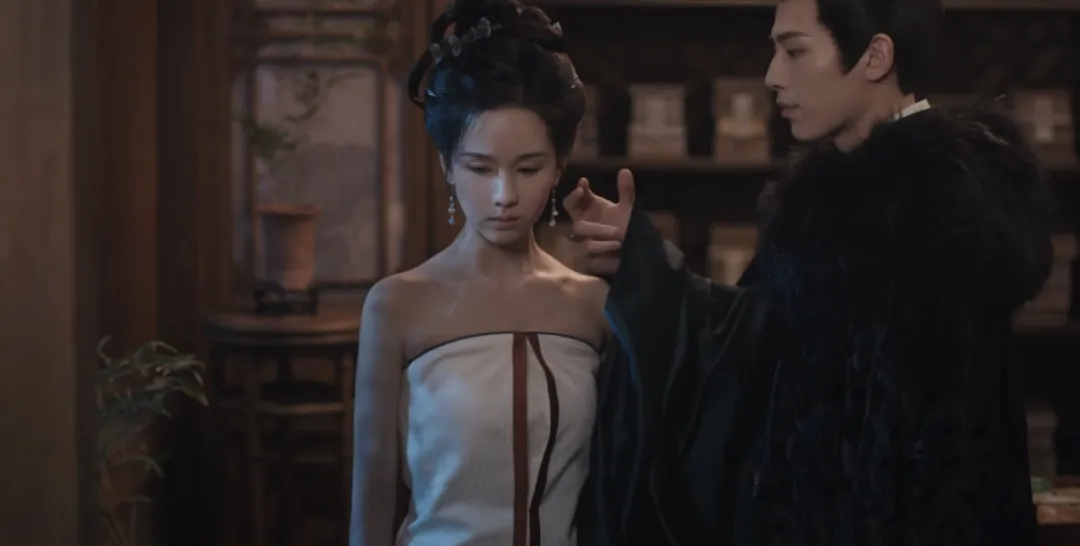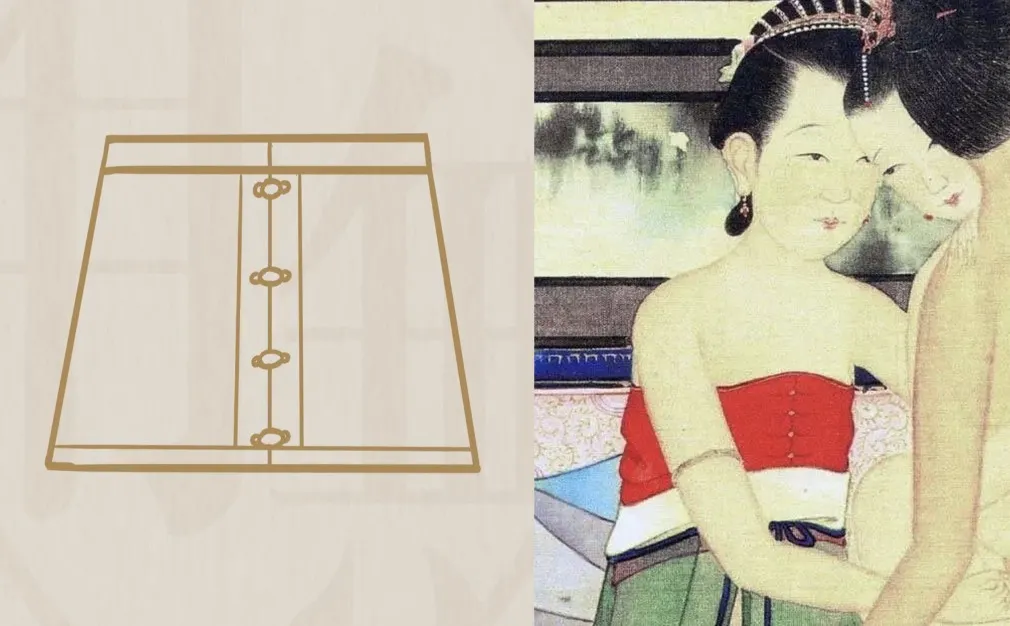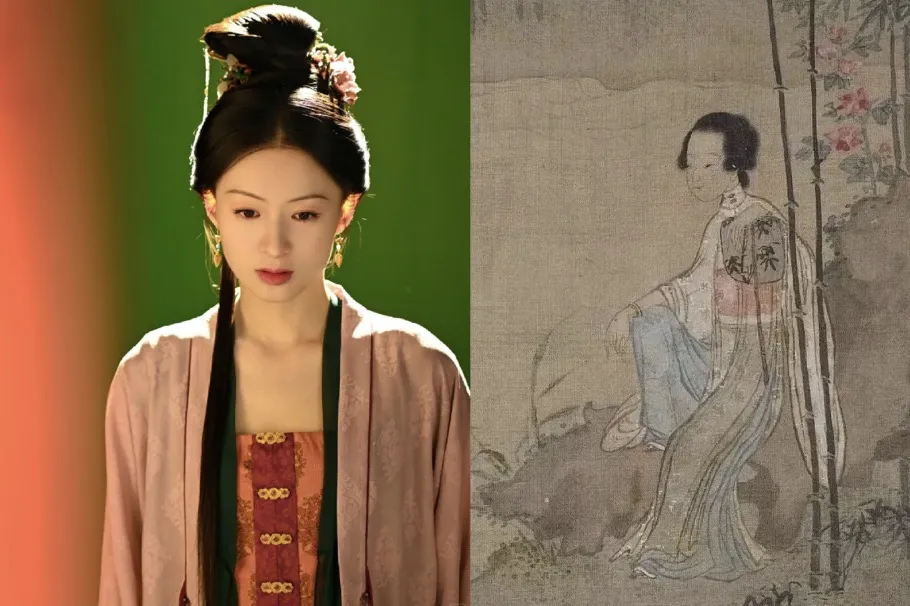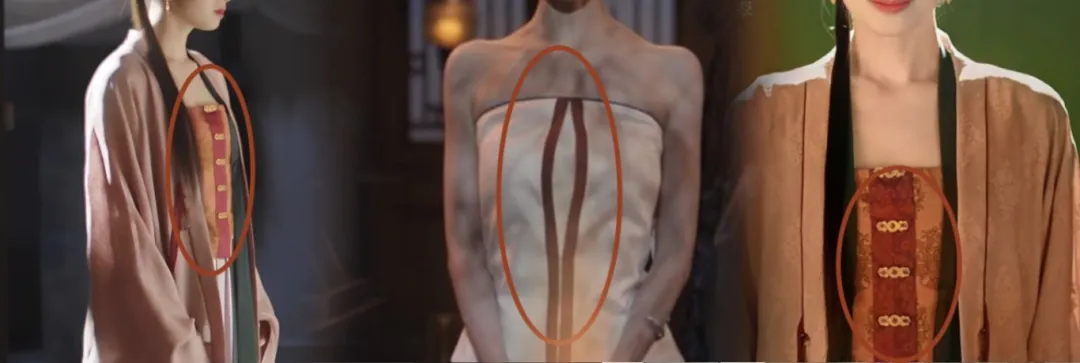Some attentive netizens noticed: Why does Chen Duling's corset in When the Wild Geese Return have a front opening? What's the purpose of the split - like opening? Let's get to the point. In fact, front - opening corsets like this existed as early as the Ming Dynasty, known as Zhuyao (主腰). They were quite popular during the Yuan and Ming periods and were also called Hehuanjin (合欢襟). Their most distinctive feature was the front - opening, which could be fastened with ties or buttons. Some people also referred to Ming - Dynasty undergarments as Zhuyao instead of Moxiong (抹胸), just a matter of terminology.
Artifacts show this style could have shoulder straps or not, and the straps could be crossed or parallel. Those without shoulder straps could still be categorized as Moxiong. Common Moxiong during the Song and Ming Dynasties were usually one - piece wraparound styles with ties, while Zhuyao had a front - opening design. This one - piece Moxiong was a long strip of cloth with ties on both sides, often gathered in the middle. It was a classic Hanfu undergarment and remained popular for a long time. In some regions, it was used as a belly wrap for men to keep warm. This style was still prevalent in the Ming Dynasty, but Zhuyao had more period - specific characteristics.
We can simply categorize Ming - style Zhuyao undergarments into three types: Moxiong - style, vest - style, and modern improved style. The front openings are fastened by ties or buttons, which can be fabric or metal. Compared to traditional one - piece Moxiong, Zhuyao - style corsets have three advantages: First, it's easier to put on and take off by unfastening the buttons; second, the added buttons allow for multiple adjustments to accentuate female curves; third, the decorative front fastenings reflect the wearer's taste. Most commercially available versions today are modern improved styles, with or without straps. They look like Zhuyao but don't actually open at the front; they just mimic the look with faux front panels and fastenings, and the back uses elastic for a pull - on fit.
In Ming - Dynasty paintings of noblewomen, this undergarment style often appears in bright vermilion, subtly visible beneath sheer outer robes, adding allure. It likely reflects the restrained yet non - plain spirit of women under Confucian influence. Previously, one - piece wraparound Moxiong was common in dramas, making front - opening designs rare. Some netizens wonder if it risks exposure. Not really, as there are inner layers and fastenings, and undergarments were custom - made. Most importantly, proper - status women would never wear undergarments alone or expose them.
Chen Duling's Zhuyao in When the Wild Geese Return is stylized for the screen. The front seems split but is actually folded inward in a "工" word pattern. Without fastenings and tailored to be form - fitting, it creates the split effect. Among Ming - Dynasty costume portrayals, The Ingenious Records of the Brocade Pouch does a better job with Zhuyao's visual appeal. Feel free to share other examples in the comments.
Of course, modern adaptations of this design incorporate contemporary elements for daily wear. Using metal buttons adds a classical aesthetic. You can also style it as a vest. Pairing a vermilion Zhuyao with a white jacket or shirt creates a striking look. Got it?




